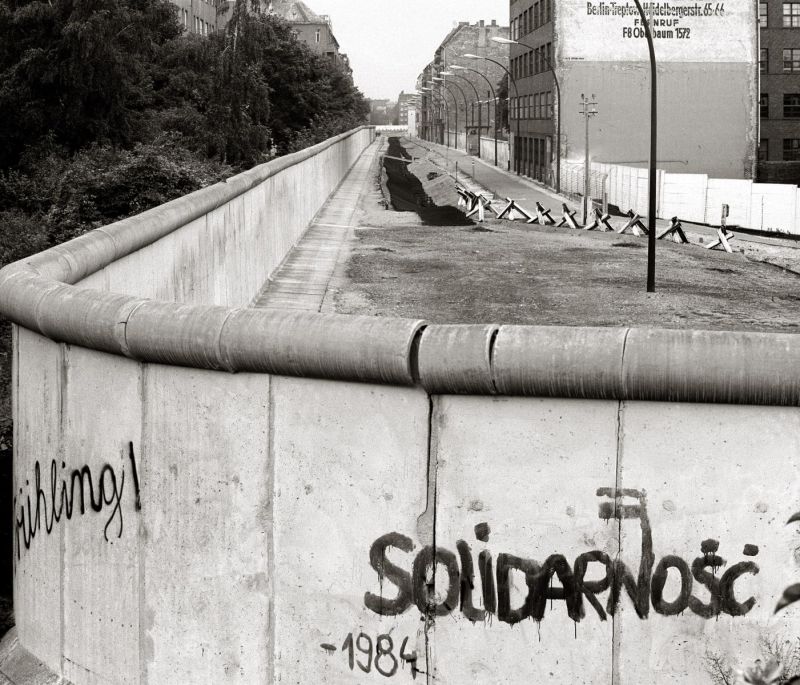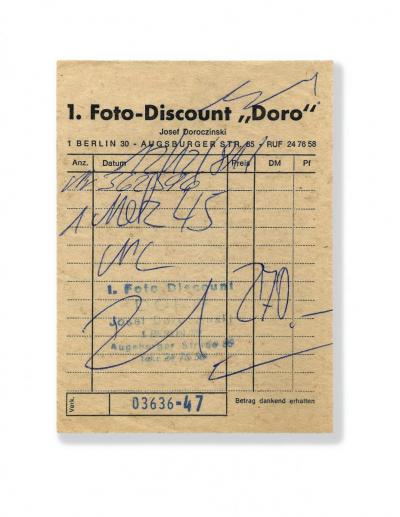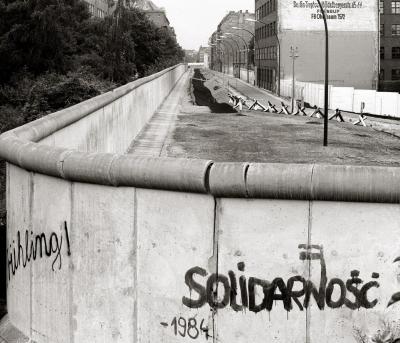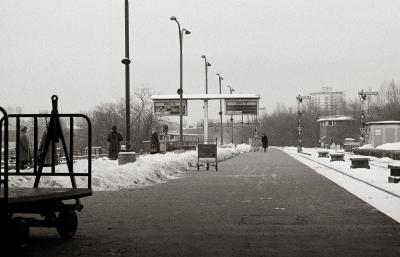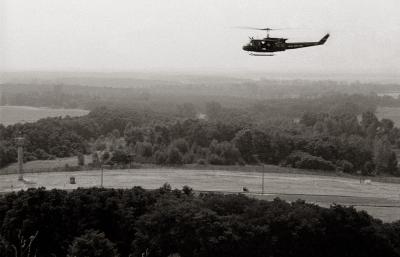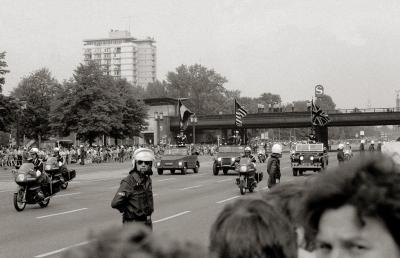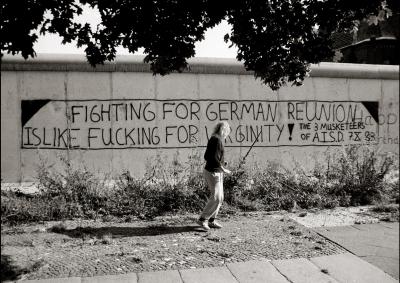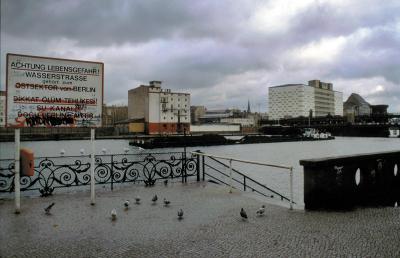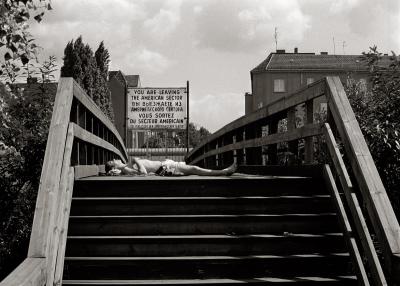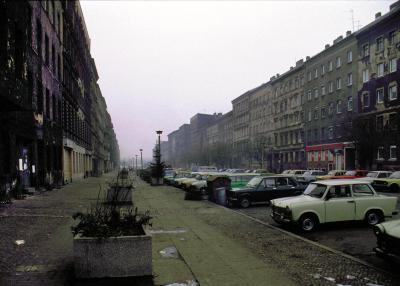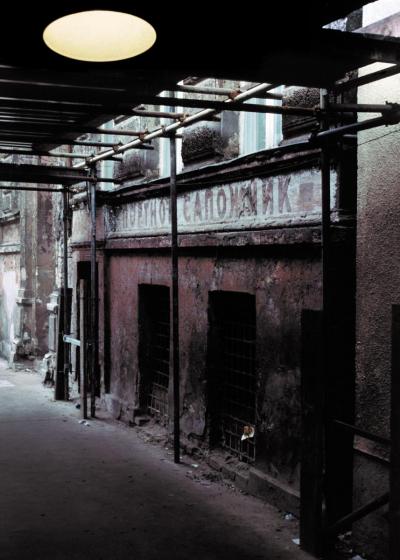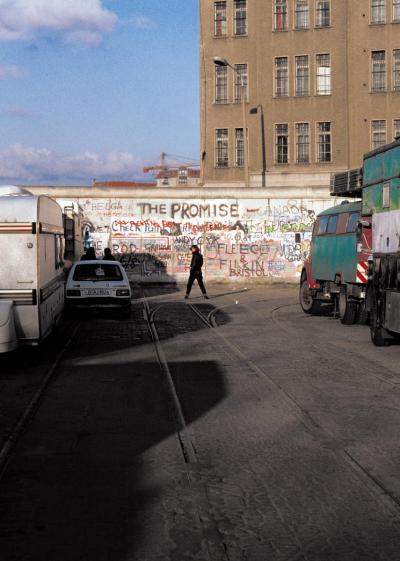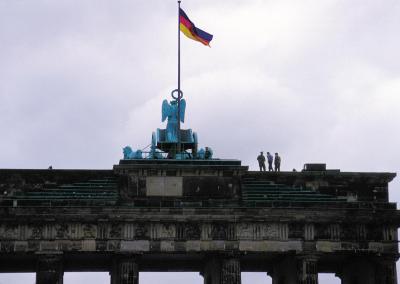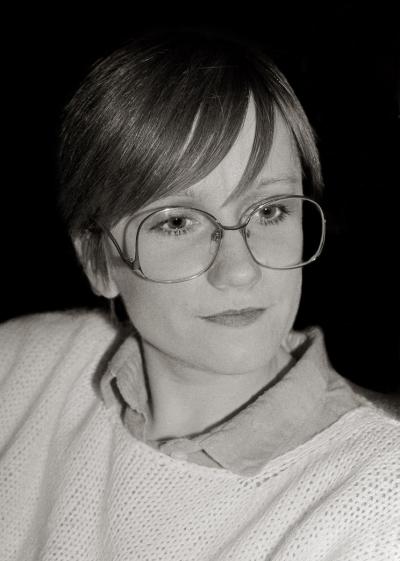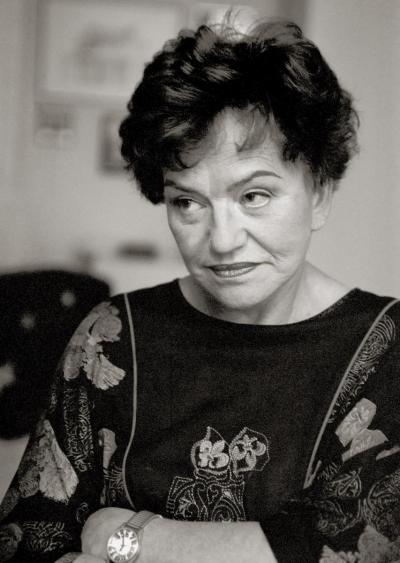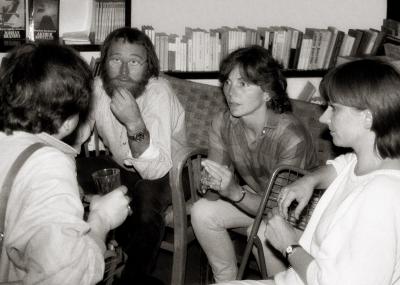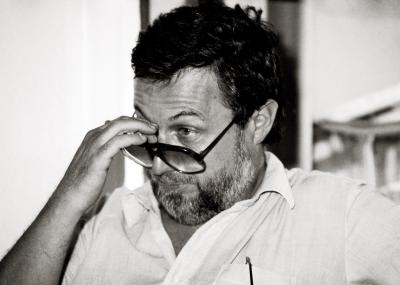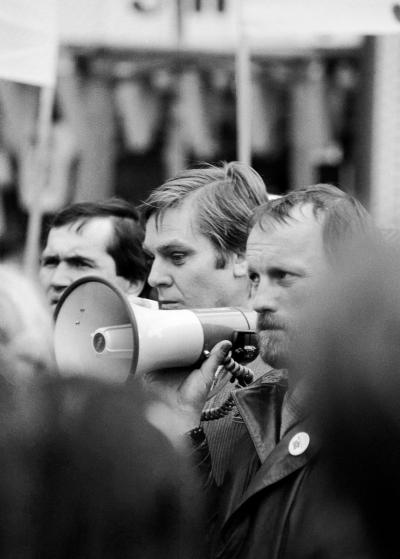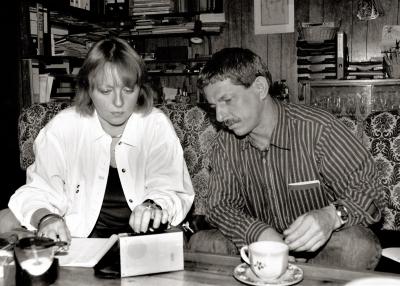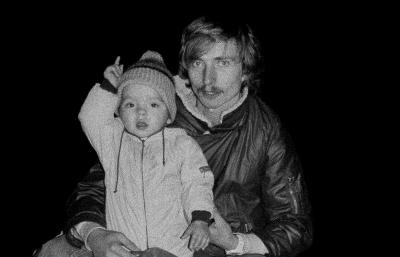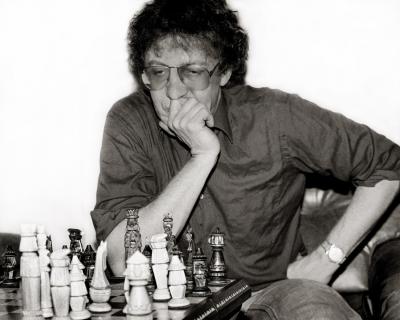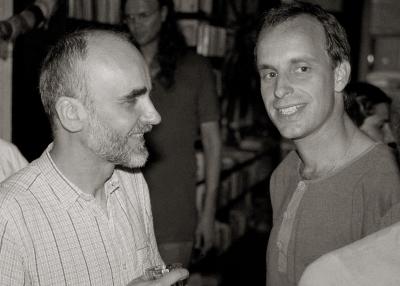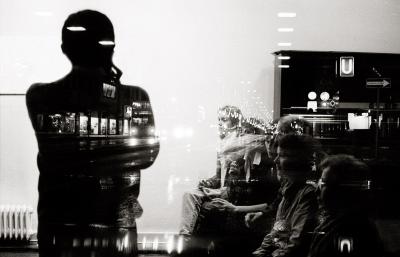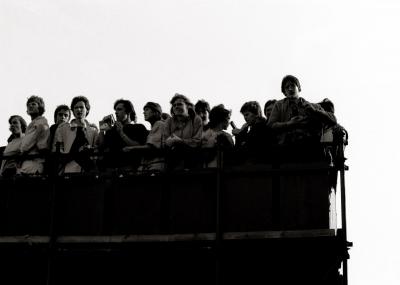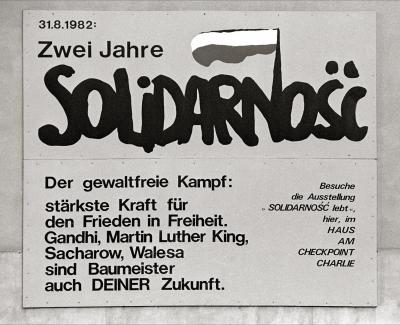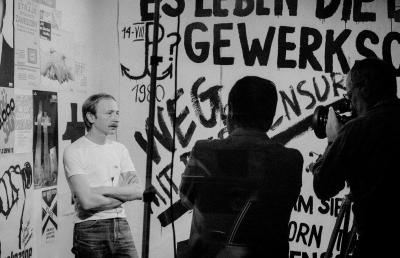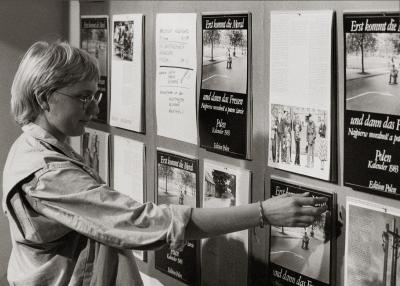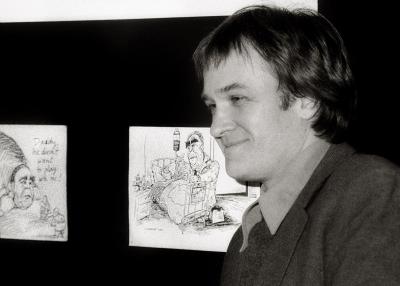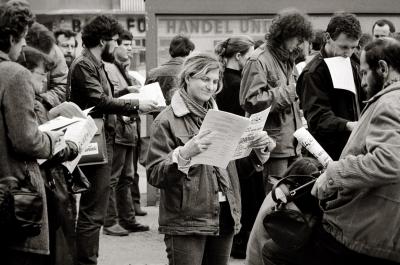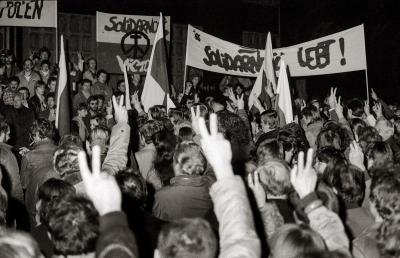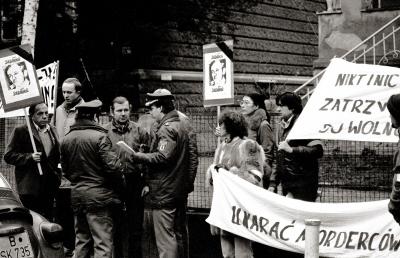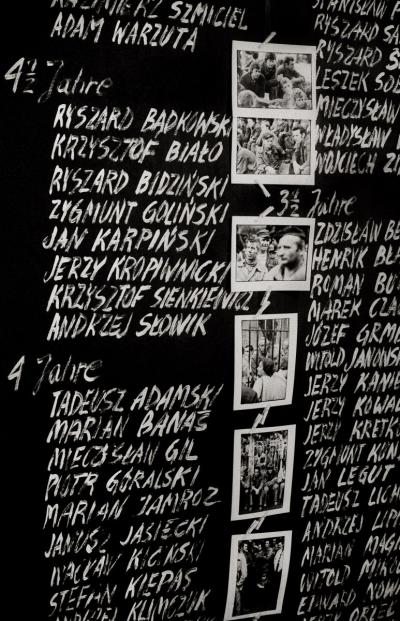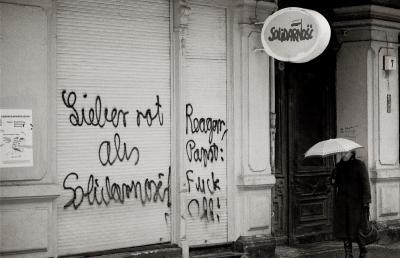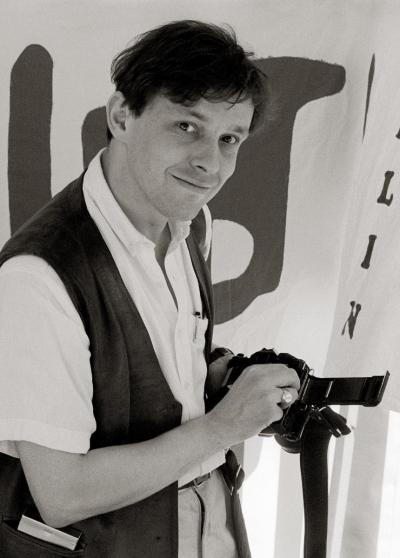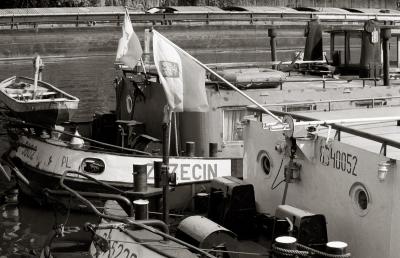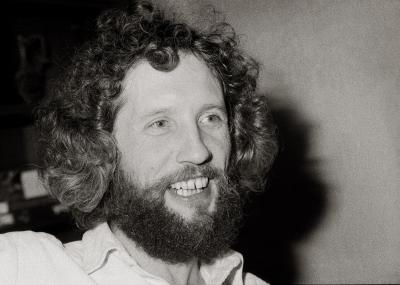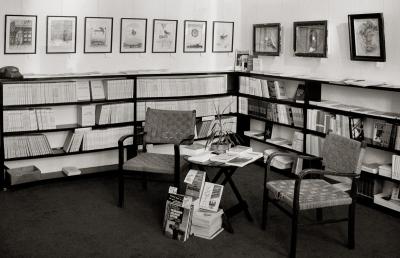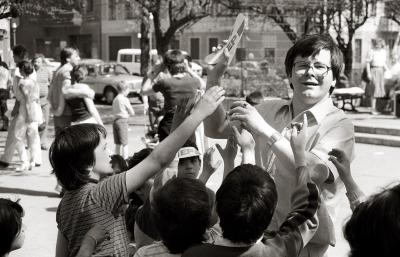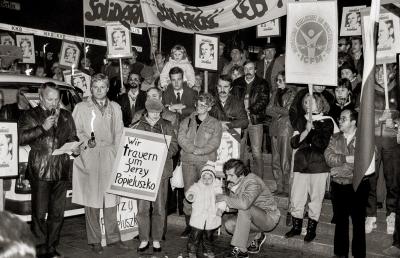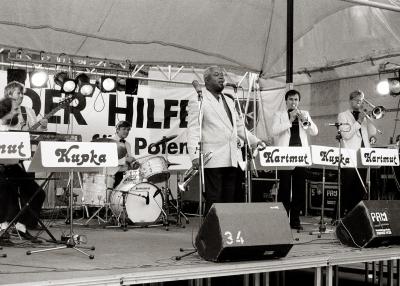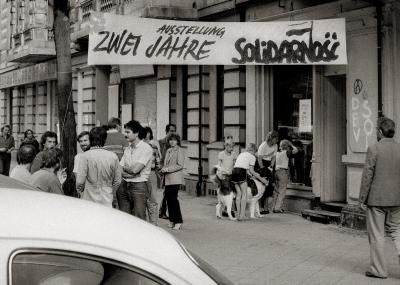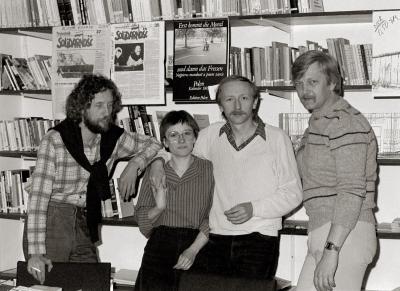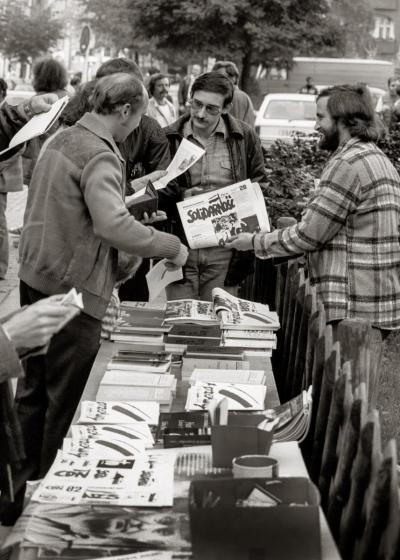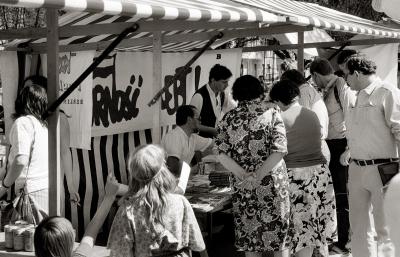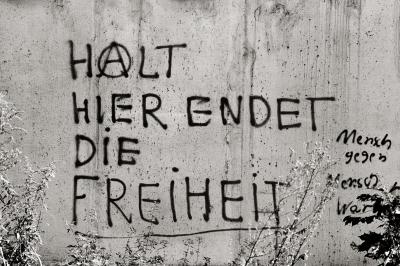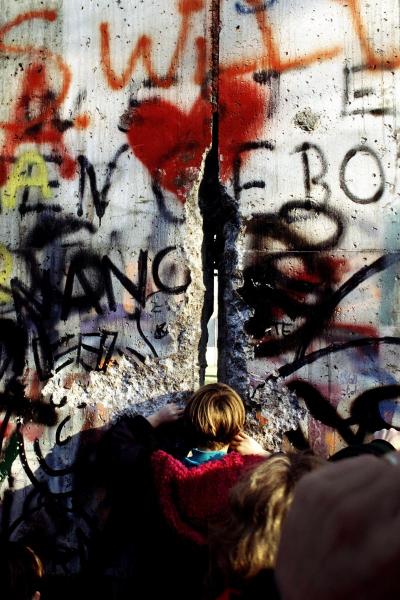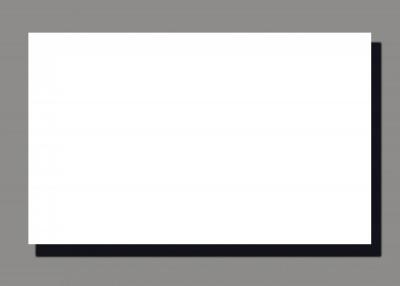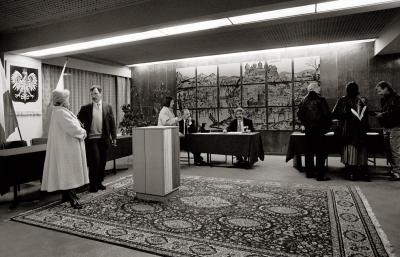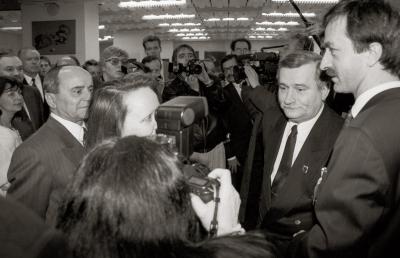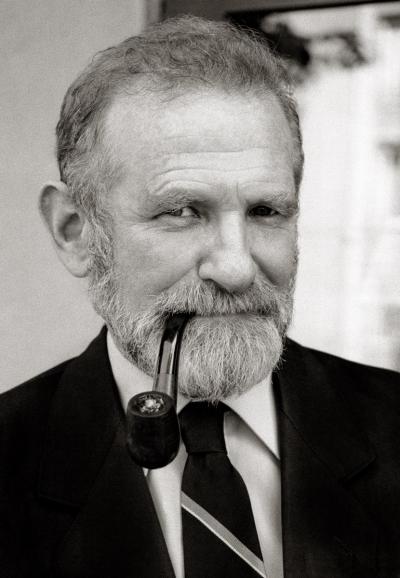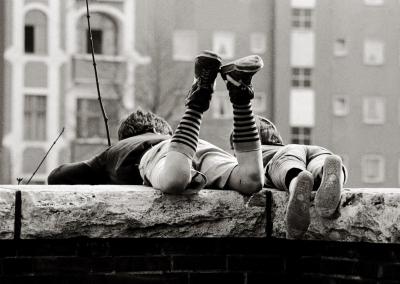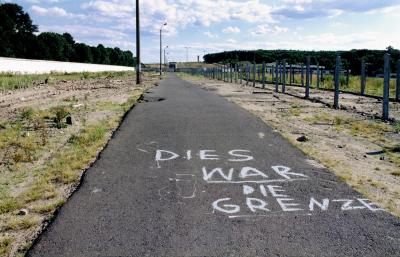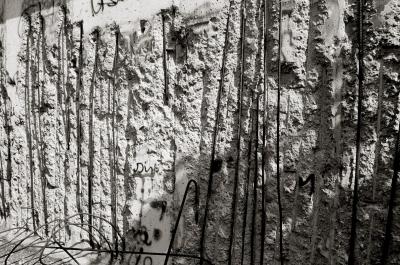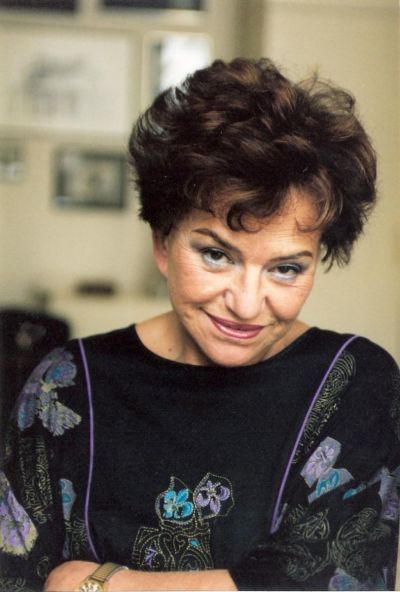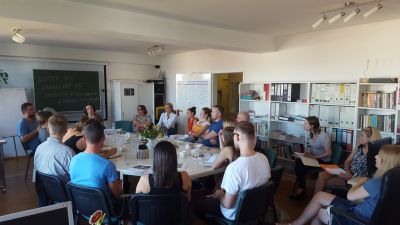Solidarni zza Muru – For Solidarność. Behind the Wall
Mediathek Sorted

The third topic block is entitled “...zza Muru / ...behind the Wall” and provides impressions of West Berlin and of the people who did not just shape this proud town but, over ten years, also lent her a “Polish” face that breaks down common stereotypes and prejudices. This section is a thank you to the many nameless (and often forgotten) volunteers without whom our work would not have been possible. In his laudation, Dr Piotr Olszówka wrote: “(...) Stefanowski’s photographs show (...) people who, in a hostile and terrified environment discovered the spirit of community, of solidarity. They were Poles and Germans, people from three countries and two nations.” This is an important statement that must never be forgotten. Especially today. In a Europe full of national conflicts and neo-fascist stupidity.
The epilogue with the heading “Up @ Down” only seemingly reaches beyond the scope of the exhibition. It begins with a photo without a motif (in the exhibitions in Łódź and Darłowo – a mirror) which is dedicated to all those who, on 4 June 1989, spoke out for freedom and democracy, not just in the Polish military mission in West Berlin but also in Poland. The other images are portraits of the people who consolidated these values by forming a new government. By the way: the epilogue, its contents and the manner of its presentation (photographs that seem to be hung randomly, but which actually form a sine curve that can only be recognised when seen from a certain distance) aroused strong emotions and even censorship, as was the case for the exhibition in the Dom Polonii in Warsaw where they said: “The Geremek has to hang somewhere else – not near Wałęsa“. At another exhibition site, we were even asked to dispense with the epilogue because it was not compatible with the host’s approach ... In the end, the exhibition was just not held there.
“Saving them from being forgotten” – this is something that everyone involved in the exhibition since 2012 agreed upon. How contemporary this sounds in an age in which you forget that there were two German states and a wall which separated not just the city but families as well.
Finally, a quotation from Dr. Piotr Olszówka: “You [the people of Berlin] supported the society which, after six months of freedom, was restrained once again. Your solidarity has prevailed. For 25 years. Is it permanent?”
Last but not least: IG Metall did not just provide space in their newly opened gallery: They also provided technical support. It was one of the few trade unions that actively provided help to the Solidarność underground movement. That should not be forgotten either.
Wojciech Drozdek, June 2018
PS. After many years, my friend Jadzia Konopacka from Łódź wrote to me in April 2018: “I remember the lorries of aid supplies from you. The auditorium in the theatre, in which Mikołajska, the Grabowskis, our cousin Edek Wende had performed, full of aid packages (...). I told the families of the internees about it so that they could register there to get the things that they needed. It was teeming with people. (...)”

















































































